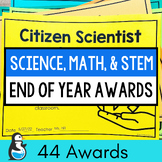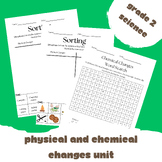493 results
10th grade astronomy laboratories
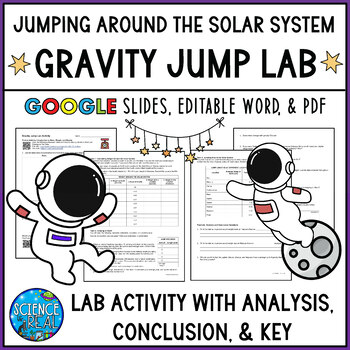
Gravity Lab - Weight, Mass, and Gravity Jump Lab Activity
⭐ ⭐ ⭐ ⭐ A classic fun lab activity made for secondary science students! Editable MS Word, PDF, and Google Slides versions included! Students learn mass, weight, and gravity and then calculate their weight and jump length at various locations in the solar system.⭐ This Lab is Broken Down Into 5 Different Tasks ⭐•Task 1- Pre-Lab: Students watch a short modern video about mass, weight, and gravity, and answer questions.•Task 2 - Weight On Other Planets: Student calculate their weight using the forc
Subjects:
Grades:
7th - 11th
Types:
NGSS:
HS-ESS1-4
, MS-ESS1-2
Also included in: Introduction Astronomy, Gravity, and Kepler's Laws GROWING BUNDLE
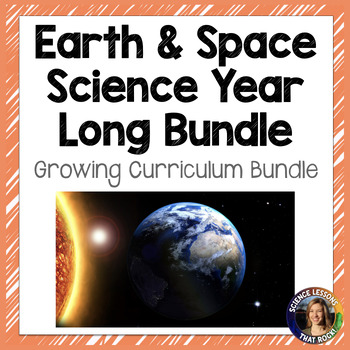
Earth and Space Science GROWING Curriculum Bundle
This is a growing year-long bundle that will include everything you need to teach earth and space science! These resources have all been used in my own classroom and I know they will engage your students and save you hours and hours of time. Note: resources are hosted on Google drive. What is a growing bundle? New resources will be added to this bundle during the 2023-2024 school year. More hands on labs, exit tickets, webquests, and nonfiction articles are coming! After purchasing will be able
Subjects:
Grades:
9th - 10th
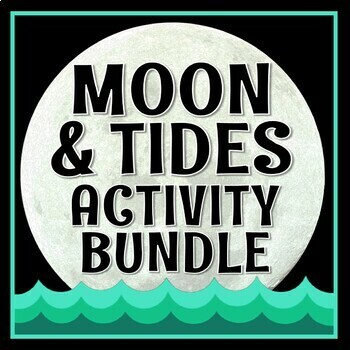
Moon Phases and Ocean Tides Activity BUNDLE NGSS MS-ESS1-1
SAVE 20% plus 3 FREE BONUSES! These resources are designed to supplement and add engagement to an existing moon and tides unit. Supports NGSS standards MS-ESS1-1 and MS-ESS1-2.BUNDLE INCLUDES:Moon Phase Sorting Activity (FREE BONUS)Graphing Moon PhasesEclipse Starter Activity (FREE BONUS)Graphing Tides ActivityRelationship Between Tides and Moon Phases Calendar ActivityMoon Phases & Tides Manipulative Activity (FREE BONUS)INDIVIDUAL RESOURCE DESCRIPTIONS:Moon Phase Sorting Activity: FREE B
Subjects:
Grades:
7th - 10th
Types:
NGSS:
HS-ESS1-4
, MS-ESS1-1

The Big Bang Theory Lab Stations Activity | Printable, Digital & Editable
About SNAPs Lab Stations ActivitiesSNAPs Lab Stations Activities require students to use science, math, literacy, problem-solving and engineering skills. They are designed to enhance students' understanding of scientific concepts and help students apply scientific ideas to the real world. Each station activity promotes skills so to develop students into proficient and competent scientific thinkers.SNAPs lab activities have five components:• Science Skills Station to develop science skill profici
Subjects:
Grades:
6th - 10th
Types:
Also included in: Earth Science Lab Stations Bundle | Printable, Digital & Editable

Graphing Ocean Tides Activity NGSS MS-ESS1-2 MS-ESS1-1
Students graph monthly and daily tides from a tide chart and make connections to the moon phases associated with spring and neap tides. This challenging activity helps them to gain a deeper understanding of the relationship between the moon and tides. ⭐ Get this activity at a huge discount in our Moon & Tides Activity Bundle! Lesson Outline: PRACTICE using a tide chart. This familiarizes kids with reading and working with a tide chart. GRAPH the tide chart data for one month. We find it
Subjects:
Grades:
7th - 10th
Types:
NGSS:
HS-ESS1-4
, MS-ESS1-2
, MS-ESS1-1
Also included in: Moon Phases and Ocean Tides Activity BUNDLE NGSS MS-ESS1-1
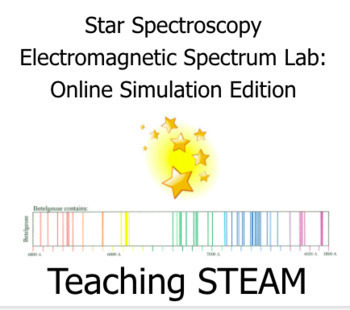
Star Spectroscopy/Electromagnetic Spectrum Lab: Online Simulation Edition
Spectroscopy is how we know what elements are in stars. This lab is awesome connecting students to how star science works. It also makes spectroscopy real in chemistry class, physics, astronomy, and general science about the electromagnetic spectrum. My students loved this activity solo and over Zoom. They felt that they learned how we use spectroscopy and have a deeper understanding of the electromagnetic spectrum. This activity is an online simulation version of Star Spectroscopy/Electromagnet
Subjects:
Grades:
9th - 12th
Types:
NGSS:
HS-ESS1-3
, HS-ESS1-1
, HS-ESS1-2
, HS-PS4-1
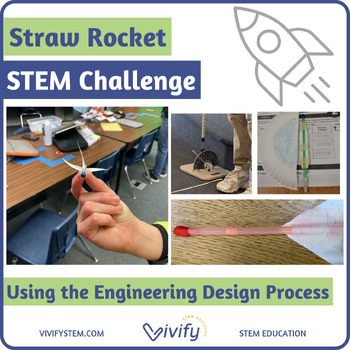
Straw Rocket STEM Challenge (Forces & Motion, Variables)
Rockets are always a student favorite! This STEM challenge pack includes a paper rocket activity, straw rocket engineering design challenge, handouts on Newton's Laws and forces, and extension problems on variable testing and graphing. Topics covered in this STEM challenge include: Forces & MotionNewton's Third LawEngineering Design ProcessAnglesVariables & Testing (1) Paper Rocket Activity: Students make a paper rocket with the template provided and then launch with a smaller straw. (2)
Subjects:
Grades:
4th - 10th
Types:
Also included in: Rocketry STEM Challenges Bundle: Forces & Variables
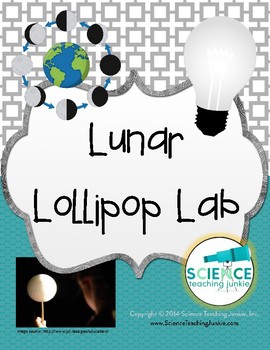
Lunar Lollipop Lab: Discovering Moon Phases
The Lunar Lollipop Lab is a great introductory lab for teaching moon phases because it allows students to visually observe the changing phases of the moon as a result of the relative positions of the Sun, Earth and moon. Don't just teach it...let your students EXPERIENCE it. By the end of the lab, students should understand why/how we have moon phases and should be able to predict the next phase in a sequence.
Each student will hold a moon pop in their hand. The lamp in the center of the roo
Subjects:
Grades:
5th - 10th
Types:
Also included in: Bundle #2 for Kimberly G.
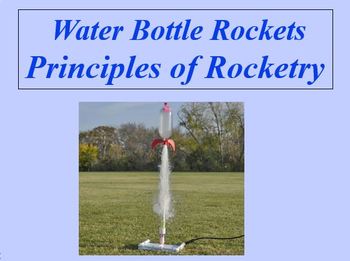
Water Bottle Rocket Launch Bundle
Want your students to study and launch water bottle rockets but need guidance? Well, I am here to help. The PowerPoint in this bundle will take your students through key vocabulary such as drag, ballast, thrust and discuss how Newton’s Three Laws affect the launch of a rocket. Day 1, students will work through the PowerPoint individually and design a water bottle rocket. Students will then join with a partner who also has a plan and merge their ideas into one design plan that they will build.
Subjects:
Grades:
5th - 12th, Higher Education
Types:
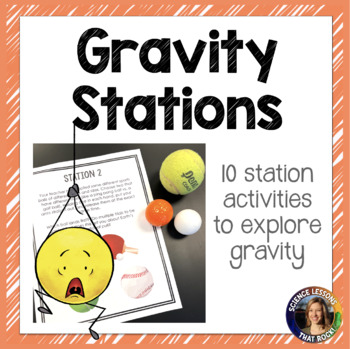
Gravity Station Activity
This station activity is designed to allow students to explore gravity and its impact on both Earth and the universe. It is not a deep dive into gravity and does not include calculations or space time. It is a fun way to introduce gravity before learning about coalescence and our solar system. Station 1: Students will use a PHET simulation to explore gravity and orbits. A laptop or tablet is required at this station. Station 2: Students will complete a ball drop experiment. Balls of different si
Subjects:
Grades:
9th - 11th
Types:
Also included in: The Universe and Stars Bundle

Tides Lab Using Water Balloons - Hands On Experience That Kids LOVE!
This lab is a really fun way to use discovery and investigation to teach students how gravity and inertia cause tides, along with the moon. The cost is low (a package of water balloons and yarn) and it is a great activity to get kids moving and outside. They work in small groups and go through a series of steps and procedures and record data. This was one of the most fun labs of the year for students and was instrumental is having kids understand why we have high tides on the side of the Earth c
Subjects:
Grades:
6th - 12th
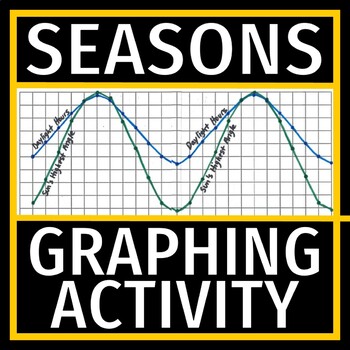
EARTH'S TILT Reason for the SEASONS ACTIVITY Graph Sun Angle and Length of Day
Inquiry-based activity! Provide middle school students a deeper understanding of Earth's seasons through the analysis of a student-generated graph. Clear worksheet instructions, easy-to-graph data, and a nice analysis section combine to make a really worthwhile activity!Objective: Graph the relationship between the seasons and angle of sunlight, as well as the seasons and length of daylight hours. ⭐Get this resource at a discount in our Seasons ACTIVITY BUNDLE!In this activity, students will
Subjects:
Grades:
7th - 10th
Types:
NGSS:
HS-ESS1-4
, MS-ESS2-6
, MS-ESS1-1
Also included in: Earth's Tilt and Reason for the Seasons Activity BUNDLE NGSS MS-ESS1-1

Kepler's Laws of Planetary Motion: ELLIPSE LAB - Loaded with FUN!
PROCEEDS BENEFIT CHARITY:
"REACH INC."-EMPOWERING ADULTS WITH DISABILITIES
http://www.reachinc.org
Come explore a beautiful marriage of both math and science. Experience Kepler's Laws of Planetary Motion like you never have before. In this dynamic ellipse lab, content and inquiry go hand in hand. This special creation is applicable to many ability and grade levels. This is lab is LOADED starting with Kepler’s 3 Laws. First, the law of ellipses. Second, the law of equal areas. Third, th
Subjects:
Grades:
6th - 12th
Types:
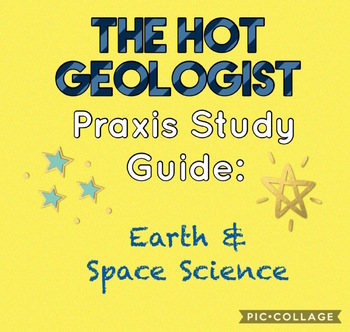
Earth Science Praxis Exam Study Guide
Need to get the extra certification to become more qualified? Say no more!
I made this study guide based on the PDF from the Praxis site: https://www.ets.org/s/praxis/pdf/5571.pdf
Includes all test specifications and sections needed to know for the exam!
> I passed for my state standards from studying this study guide I made! Good luck, studying one page a day helps!
MY STUDY TIPS:
• Study every day.
• Study a page a day, and also go back to old material to refresh.
• Pick a time of
Subjects:
Grades:
7th - 12th
Types:
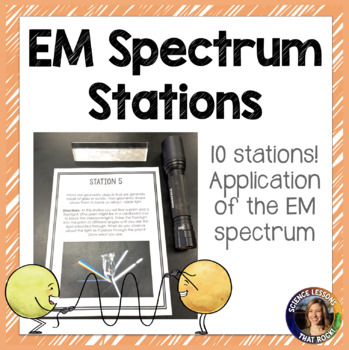
Electromagnetic Spectrum Station Activity
This station activity is designed to allow students to explore the electromagnetic spectrum and look at application of different wavelengths. This is a fun activity to add to your astronomy unit! Station activities included:Station 1: Students will use a PHET simulation to explore molecules and light. A laptop or tablet is required at this station. Station 2: Students will analyze an EM spectrum diagram and answer questions. Station 3: Students will observe X rays of bones and draw conclusions a
Subjects:
Grades:
9th - 11th
Types:
Also included in: The Universe and Stars Bundle

The Doppler Effect - Evidence for the Big Bang Theory | Digital Lab Activity
In this Google Slides™ digital lab activity, the students will learn how the Doppler effect is used to measure the movement of galaxies and stars in space and why the redshift in the light from distant galaxies is one of the pieces of evidence for the Big Bang Theory. The students will analyze light spectra from galaxies and stars. They will notice a pattern in the relationship between the position of the absorption lines with respect to the red end of the electromagnetic spectrum and the distan
Subjects:
Grades:
8th - 11th
Types:
CCSS:
NGSS:
HS-ESS1-2

Star Nuclear Fusion Lab
In this lesson, students will build models that show how stars fuse hydrogen in the core and release energy. There are 2 versions included:1. MIDDLE SCHOOL VERSION: In this version, students will model the fusion of protons only. They will use white mini-marshmallows to show the fusion of hydrogen all the way up to iron (where fusion stops). 2. HIGH SCHOOL VERSION: In this version, students will model the fusion of protons and neutrons. They will use white mini-marshmallows as protons, colored m
Subjects:
Grades:
9th - 11th
Types:
NGSS:
HS-ESS1-3
Also included in: Stars Bundle
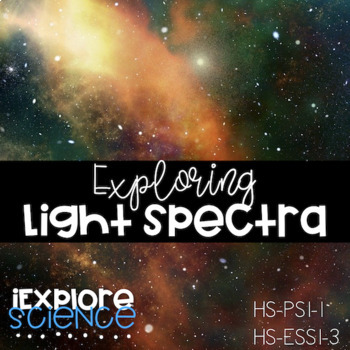
Exploring Light Spectra - Spectroscope Lab (HS-ESS1-3, HS-PS1-1)
Launch a storyline into stars, the universe, and matter and energy in space by investigating the sun's spectrum and exploring what we can learn about our star by understanding it. This bundle includes three activities to guide students through an abbreviated 5E sequence (the engage, explore, and explain phases).Phenomenon: Fraunhofer Lines Engage Students will observe the sun's spectrum and ask questions about the dark lines that can be observed. Exploring Light With Spectroscopes* Explore Stu
Subjects:
Grades:
9th - 12th
Types:
NGSS:
HS-PS1-1
, HS-ESS1-3
, HS-ESS1-1
Also included in: Evidence For The Big Bang Theory BUNDLE - HS-ESS1-2
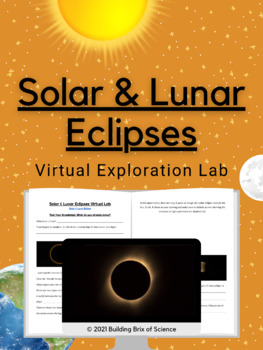
Solar & Lunar Eclipses Virtual Exploration Lab
What is the difference between a Solar and Lunar eclipse? In this virtual lab, students will manipulate the Earth & Moon to determine what causes an eclipse. Students will also:⚗️Test their Pre-Existing Knowledge of an Eclipse⚗️Identify the Lunar Phases that occur during Eclipses⚗️Draw Diagrams of a Solar & Lunar Eclipse⚗️Compare & Contrast Partial and Total EclipsesNOTE: This activity links to the free Interactive from Earth Space Lab. Check it out below!Solar & Lunar EclipsesPu
Subjects:
Grades:
6th - 12th
Types:
NGSS:
MS-ESS1-1
Also included in: Virtual Science Labs Full Exploration Activity Bundle
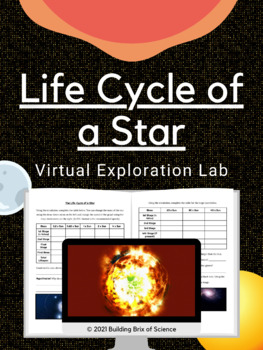
Life Cycle of a Star Virtual Exploration Lab
What are the stages of a star's life? In this virtual lab, students will use mathematical data to analyze the life cycles of different stars based on their initial mass. Students will also:⚗️Test their Pre-Existing Knowledge of Stars⚗️Analyze the Fusion of Hydrogen Atoms into Helium⚗️Explain the Correlation between a Star's Mass and its' Age⚗️Investigate the Formation of Neutron Stars & Black HolesNOTE: This activity links to the Star in the Box Simulation from Las Cumbres University. Check
Subjects:
Grades:
6th - 12th
Types:
NGSS:
HS-ESS1-3
, HS-ESS1-1
Also included in: Virtual Science Labs Full Exploration Activity Bundle
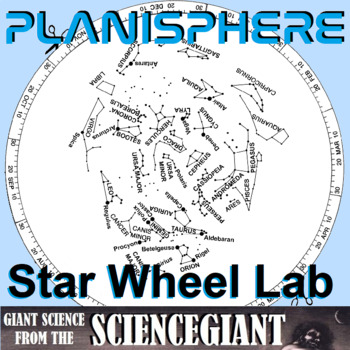
Planisphere Lab Activity: A Star Wheel for Constellation Exploration
Inexpensive and ingenious! Planispheres are a unique tool for learning astronomy: a make-it-yourself star map, adjustable for any time of night in any month of the year. They are designed to show the position of prominent constellations in the night sky. It's a low-tech way for Ss to learn the location (and thus give meaning to key vocabulary terms) of the horizon, zenith, meridian, ecliptic and celestial equator on the celestial sphere. This lab includes two types of planispheres: one for stan
Subjects:
Grades:
6th - 12th, Higher Education
Types:
NGSS:
HS-ESS1-4
, 5-ESS1-2
, MS-ESS1-1
Also included in: StayGiant Earth Science Bundle: Astronomy (space exploration)
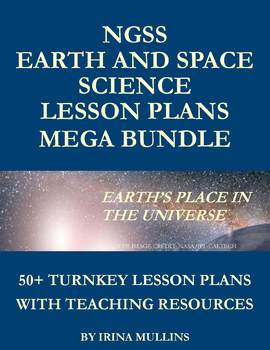
NGSS Earth and Space Science Lesson Plans MEGA BUNDLE: 50+ Turnkey Lesson Plans
This Mega Bundle is a NGSS-designed Earth and Space Science curriculum.***** GIFT WITH PURCHASE: Download the preview file to view information about your gift with purchase. *****This curriculum meets the NGSS High School Earth and Space Science performance expectations and covers the NGSS High School Earth and Space Science disciplinary core ideas in ESS1: Earth’s Place in the Universe. The curriculum includes a space science textbook (astronomy textbook), Test Bank with more than 1,000 questio
Subjects:
Grades:
6th - 12th
Types:
NGSS:
HS-ESS1-6
, HS-ESS1-4
, HS-ESS1-3
, HS-ESS1-5
, HS-ESS1-1
...

Modeling the Solar System
In this laboratory exercise, students will be able to construct a scaled model of the solar system. The finished model is nearly two meters long! All of the paper shapes to create the lab are included in the model template, so no adding machine tape is necessary.The model displays the modern conception of the solar system which consists of eight planets and three dwarf planets. The model also displays the main asteroid belt, the Kuiper Belt, and the aphelion of Comet Halley. Their are two scales
Subjects:
Grades:
8th - 10th
Types:

Radioactive Decay Lesson Plan
The purpose of this 75-minute lesson is to help middle school and high school students understand that radioactive decay is the tool used by scientists to find the age of very old objects. While it is dangerous and nearly impossible to do a lab on radioactive decay, this activity is a ★fantastic alternative★!----------------------------------------------------For this activity students will:☆Take-notes with the aid of a PowerPoint and a student Graphic Organizer☆Use a hands-on activity with M&am
Subjects:
Grades:
8th - 12th
Types:
Showing 1-24 of 493 results


